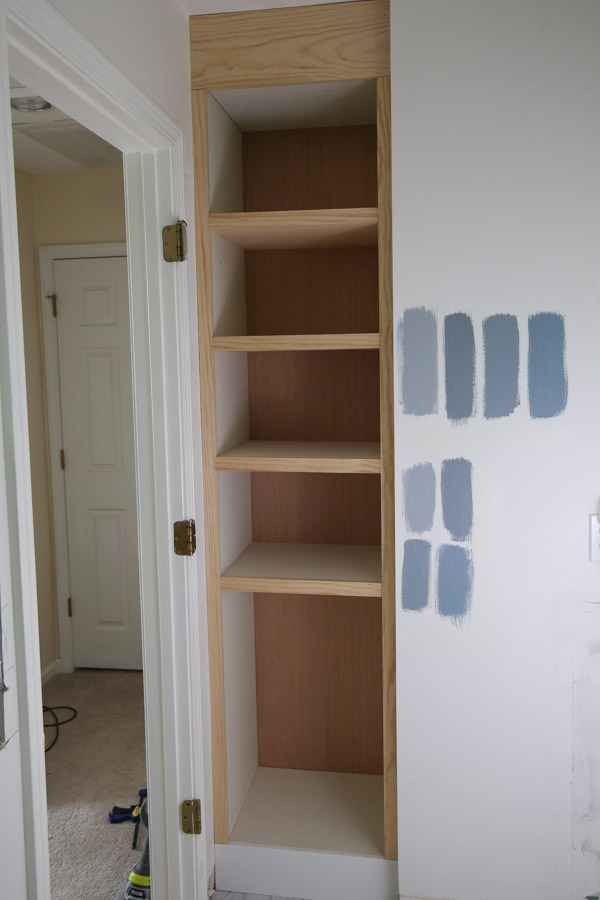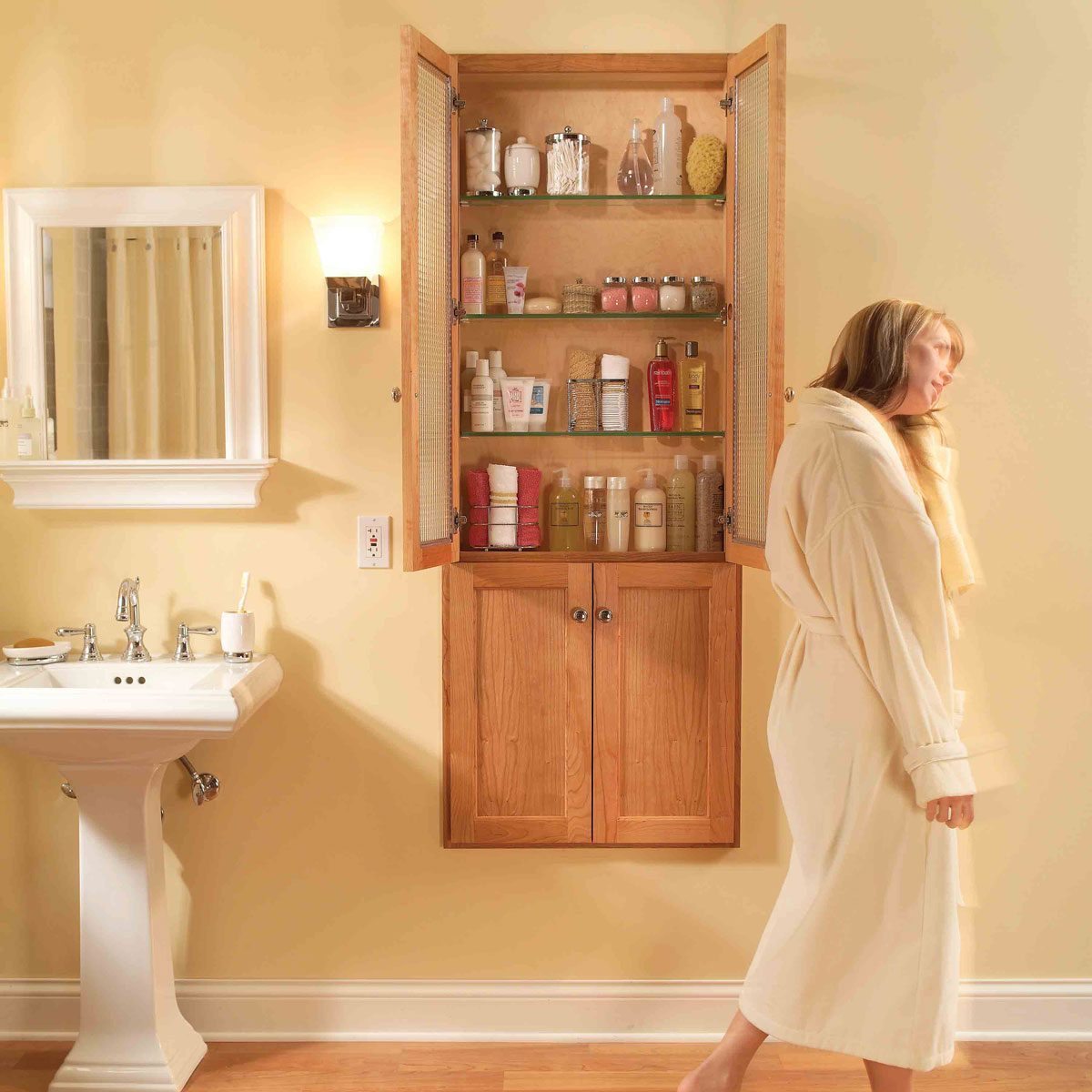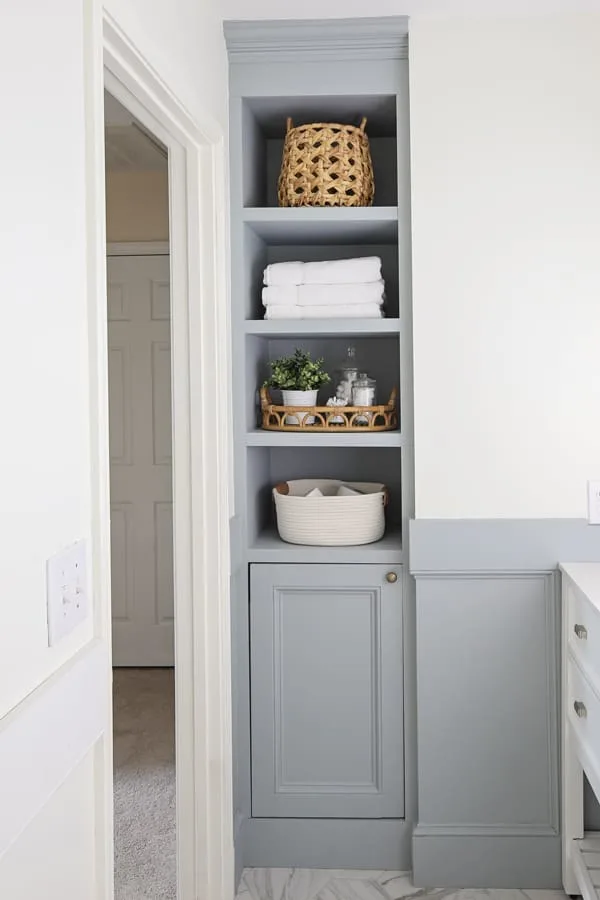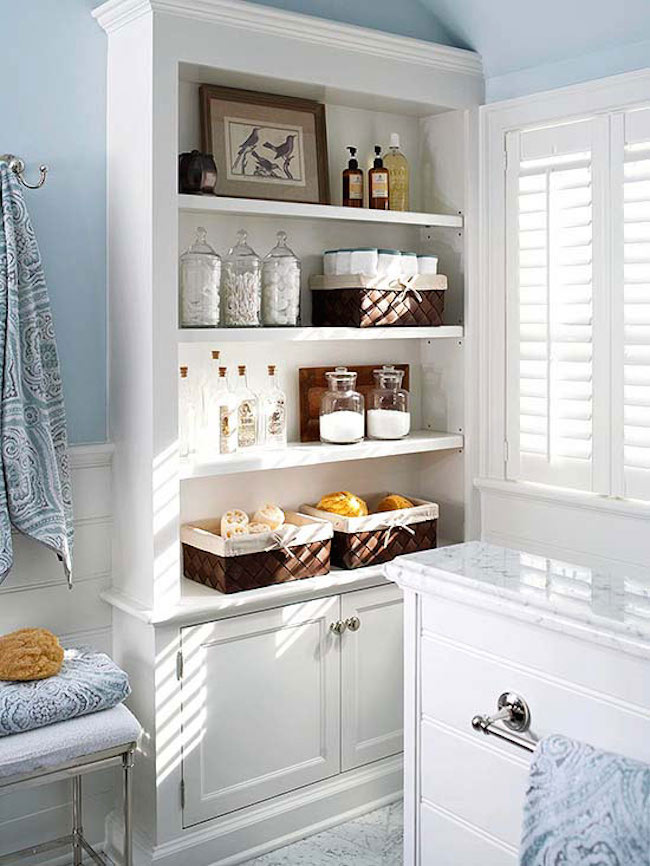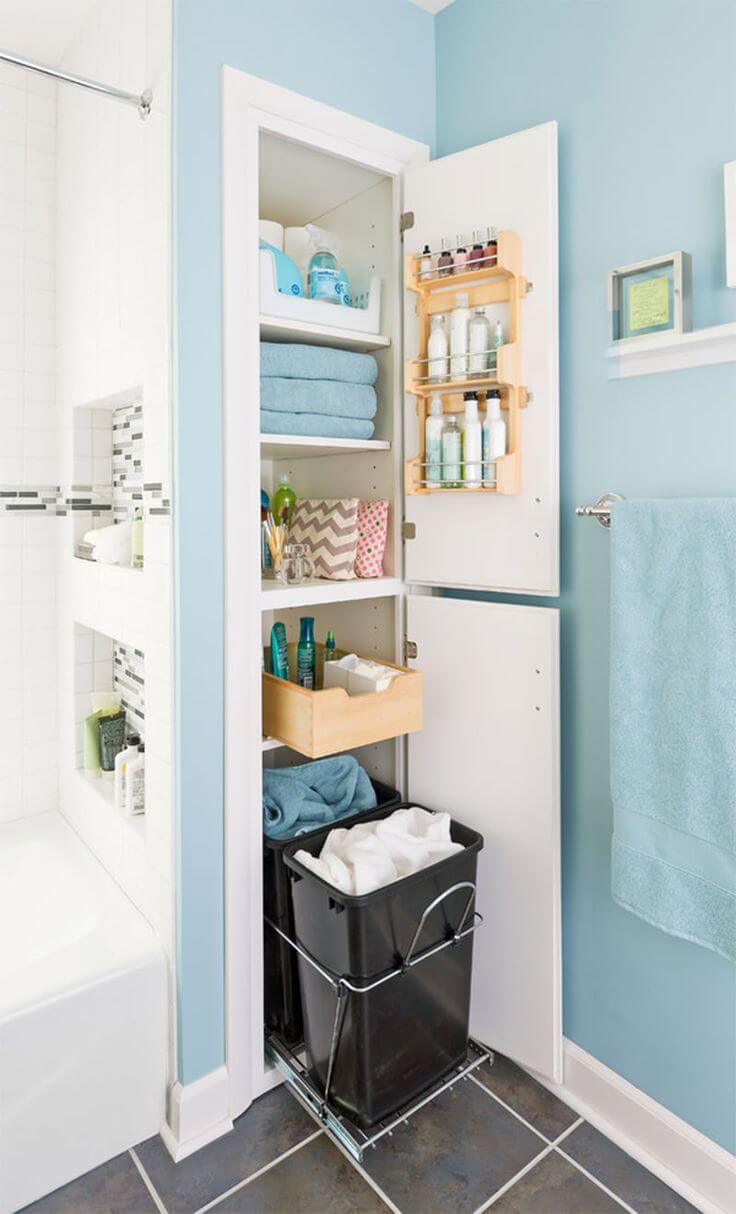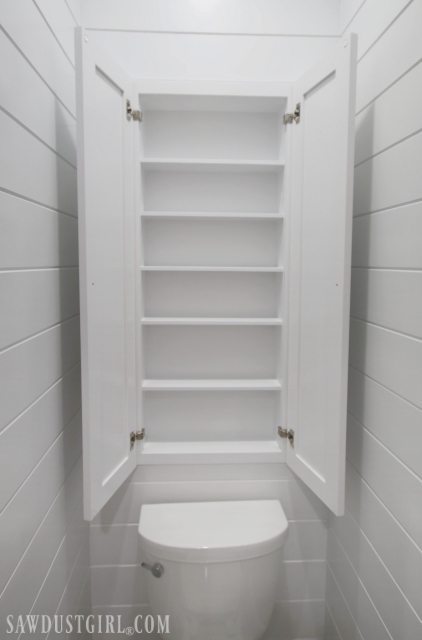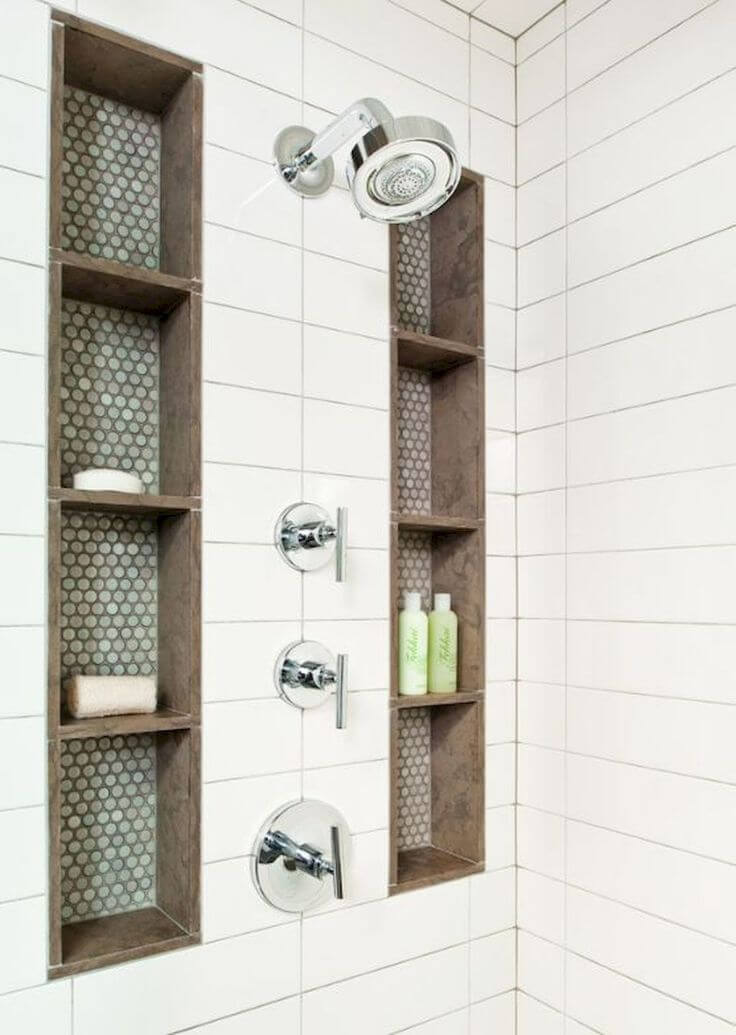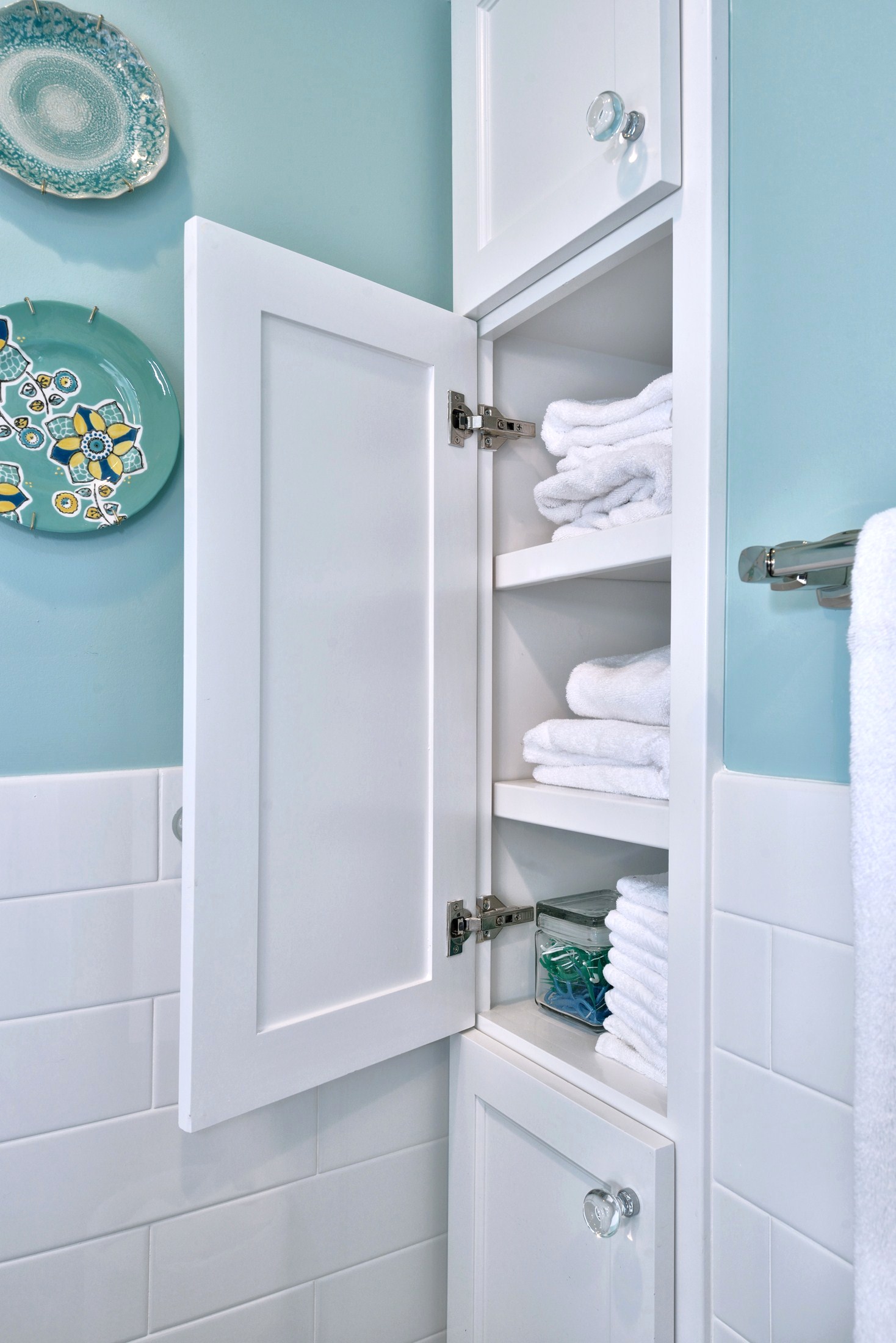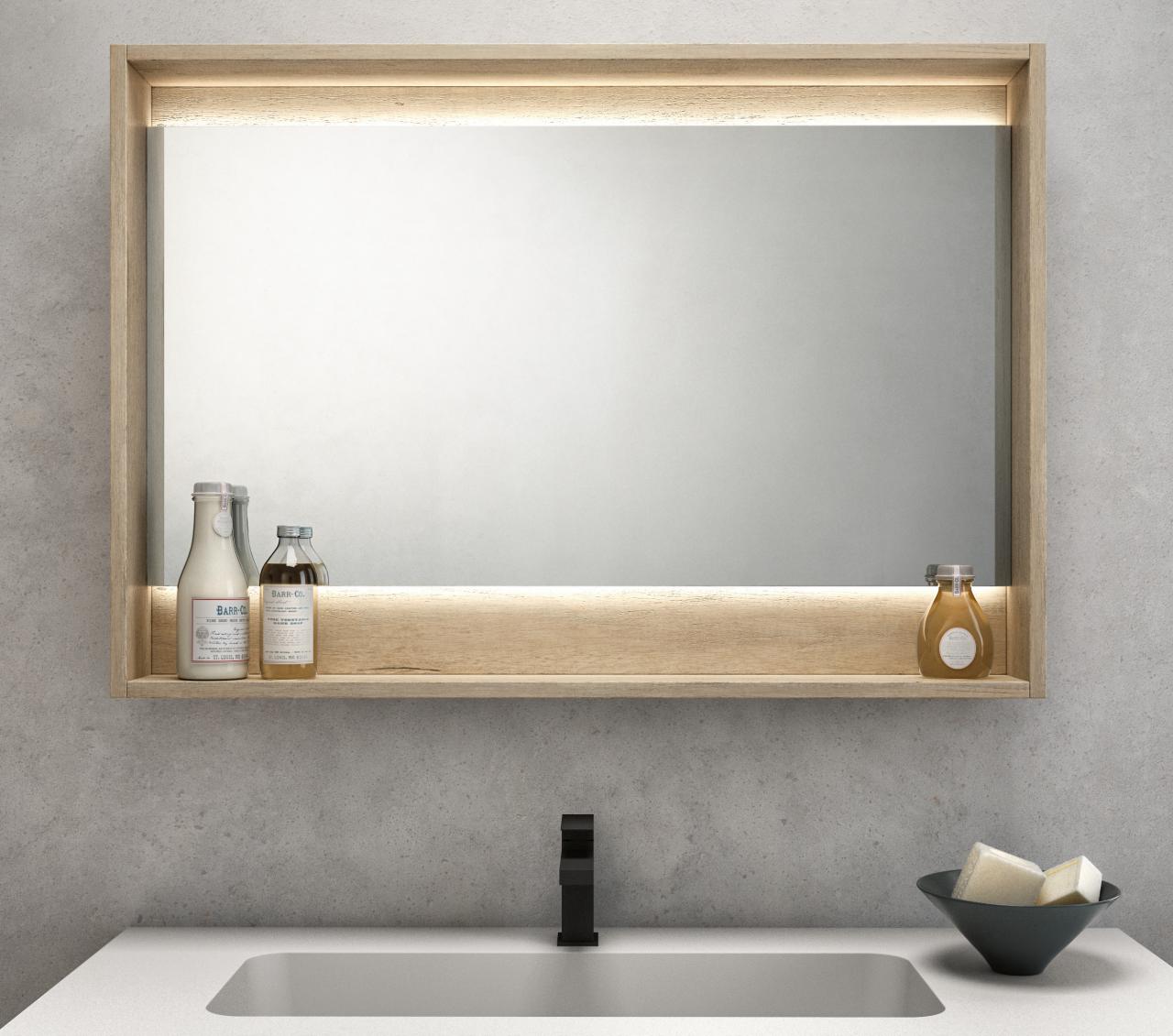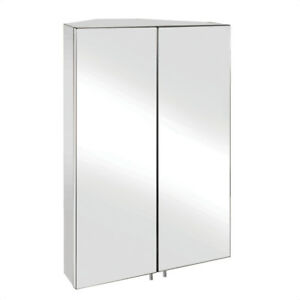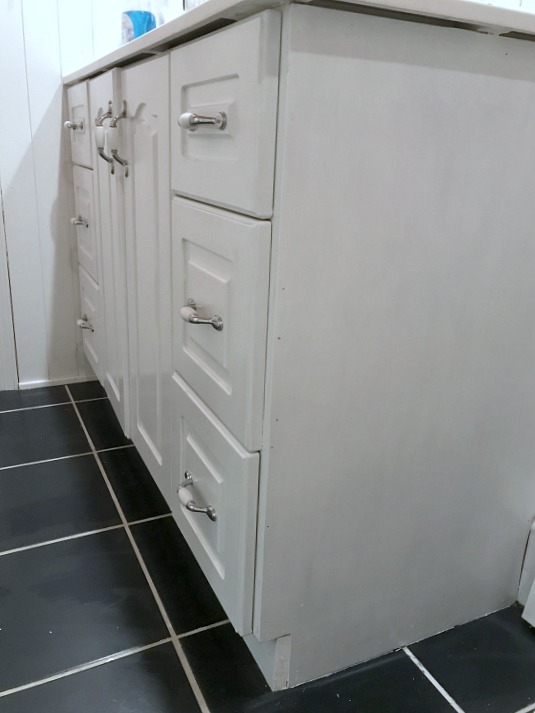Introduction to Built-In Bathroom Cabinets
Bathroom cabinets are essential components of any bathroom, offering storage space for toiletries, towels, and other necessities while also contributing to the overall aesthetic appeal of the room. Built-in bathroom cabinets take this functionality to the next level by seamlessly integrating storage solutions into the existing architecture of the space. Let’s discuss the advantages and functionality of built-in bathroom cabinets, exploring why they’re a popular choice for homeowners and how they can enhance the look and feel of your bathroom.
- Maximizing Space Efficiency: One of the primary benefits of built-in bathroom cabinets is their ability to maximize space efficiency. Unlike freestanding cabinets, built-in cabinets are custom-designed to fit the specific dimensions of your bathroom walls, ensuring that every inch of space is utilized effectively. This is particularly advantageous in smaller bathrooms where space is at a premium, allowing you to make the most of limited square footage without sacrificing storage capacity.
- Seamless Integration: Built-in bathroom cabinets are seamlessly integrated into the existing architecture of the room, creating a cohesive and polished look. Whether you opt for recessed cabinets that are flush with the wall or cabinets with decorative molding that complement the style of your bathroom, built-in options blend seamlessly with the surrounding decor for a unified aesthetic.
- Customization Options: Another advantage of built-in bathroom cabinets is the wide range of customization options available. From choosing the layout and configuration of the cabinets to selecting the finish and hardware, built-in cabinets can be tailored to suit your specific preferences and needs. This level of customization allows you to create a storage solution that not only meets your practical requirements but also reflects your style and taste.
- Enhanced Functionality: Built-in bathroom cabinets offer enhanced functionality compared to their freestanding counterparts. With strategically placed shelves, drawers, and compartments, built-in cabinets provide convenient storage solutions for a variety of bathroom essentials, from towels and toiletries to cleaning supplies and linens. By keeping everything neatly organized and easily accessible, built-in cabinets help streamline your daily routine and keep your bathroom clutter-free.
- Increased Property Value: Investing in built-in bathroom cabinets can also increase the overall value of your home. Potential buyers are often drawn to homes with well-designed storage solutions, especially in high-traffic areas like the bathroom. By incorporating built-in cabinets into your bathroom design, you can enhance the appeal and marketability of your home, making it more attractive to prospective buyers in the future.

Designing Your Built-In Bathroom Cabinets
When it comes to designing built-in bathroom cabinets, there are several factors to consider to ensure that they not only maximize space but also enhance the style and aesthetic appeal of your bathroom. From selecting the right layout and configuration to choosing complementary materials and finishes, thoughtful design choices can make a big difference in the overall look and functionality of your cabinets. Below are some tips and ideas for designing built-in bathroom cabinets that are both practical and stylish.
Assess Your Storage Needs: The first step in designing built-in bathroom cabinets is to assess your storage needs. Consider what items you need to store in your bathroom and how much space you’ll need to accommodate them.
Choose the Right Layout: Once you have a clear understanding of your storage needs, you can begin to design the layout of your built-in cabinets. Consider the available wall space and how you can best utilize it to maximize storage capacity.
Consider Built-In Lighting: Built-in lighting can enhance both the functionality and ambiance of your bathroom cabinets. Consider incorporating recessed lighting above or below the cabinets to illuminate the space.
Select Complementary Materials and Finishes: The materials and finishes you choose for your built-in bathroom cabinets can have a big impact on the overall look and feel of the space.
Incorporate Decorative Details: Don’t overlook the importance of decorative details when designing your built-in bathroom cabinets.
Optimize Accessibility: Design built-in bathroom cabinets, especially if you have mobility issues or limited reach.
Choosing the Right Materials for Durability and Aesthetic Appeal
When selecting materials for your built-in bathroom cabinets, it’s important to consider both durability and aesthetic appeal. The materials you choose will not only affect the longevity of your cabinets but also play a significant role in defining the overall look and feel of your bathroom. Below are various materials available for built-in bathroom cabinets and a guide in choosing the right ones for your needs.
Wood: Wood is a popular choice for built-in bathroom cabinets due to its durability, versatility, and timeless appeal. Hardwoods such as oak, maple, cherry, and walnut are particularly well-suited for bathroom cabinets, as they are resistant to moisture and humidity. Wood cabinets can be stained or painted to match your bathroom decor and can be customized with decorative details such as molding and trim.
Engineered Wood: Engineered wood, such as plywood and MDF (medium-density fiberboard), is an affordable alternative to solid hardwoods for built-in bathroom cabinets. These materials are made by binding together wood fibers with adhesive, resulting in a durable and stable product that is less susceptible to warping and cracking than solid wood. Engineered wood cabinets can be finished with veneers or laminates to achieve the desired look.
Laminate: Laminate is a versatile material that is commonly used for built-in bathroom cabinets. Made by fusing multiple layers of resin-impregnated paper under high pressure, laminate is highly durable and resistant to moisture, making it ideal for use in humid environments like bathrooms. Laminate cabinets are available in a wide range of colors, patterns, and textures, allowing you to achieve virtually any look you desire.
Metal: Metal cabinets are a sleek and modern option for built-in bathroom cabinets. Materials such as stainless steel, aluminum, and brass are durable, corrosion-resistant, and easy to clean, making them well-suited for use in bathrooms. Metal cabinets can be finished with brushed or polished surfaces to complement a variety of design styles, from industrial to contemporary.
Glass: Glass cabinets add a touch of elegance and sophistication to any bathroom. Glass panels can be used as door fronts or inserts for built-in cabinets, allowing you to showcase decorative items or keep toiletries organized and easily accessible. Frosted or textured glass can provide privacy while still allowing light to pass through, creating a bright and airy feel in the bathroom.
Step-by-Step Instructions for Installing Built-In Bathroom Cabinets
Installing built-in bathroom cabinets is a rewarding project that can enhance the functionality and aesthetics of your space. Whether you’re a seasoned DIY enthusiast or a first-time renovator, with the right tools and know-how, you can tackle this project with confidence. Below we provide step-by-step instructions for installing built-in bathroom cabinets, from preparation and planning to completion and finishing touches.
Gather Your Tools and Materials: Before you begin, gather all the tools and materials you’ll need for the project. This may include a tape measure, level, drill, screws, brackets, stud finder, pencil, safety goggles, and protective gloves. You’ll also need the cabinets themselves, as well as any additional hardware or accessories.
Measure and Plan: Start by measuring the dimensions of your bathroom walls and sketching out a plan for the layout of your cabinets. Take into account the location of plumbing fixtures, electrical outlets, and other obstacles, as well as any design preferences or aesthetic considerations. Use a stud finder to locate the studs in the wall, as these will provide the necessary support for the cabinets.
Prepare the Wall: Before installing the cabinets, you’ll need to prepare the wall surface to ensure a smooth and stable foundation. This may involve removing any existing cabinets or fixtures, patching holes or cracks in the drywall, and sanding down rough spots. Use a level to ensure that the wall is plumb and straight before proceeding.
Install the Cabinets: Once the wall is prepared, it’s time to install the cabinets. Begin by locating the studs in the wall and marking their positions with a pencil. Use these markings to guide the placement of the cabinets, ensuring that they are securely anchored to the wall. Use a drill to create pilot holes for the screws, then attach the cabinets to the wall using screws or brackets.
Secure the Cabinets: Once the cabinets are in place, secure them to the wall using screws or brackets. Be sure to check that each cabinet is level and plumb before tightening the screws fully. Use a level to ensure that the cabinets are aligned with each other and that the doors and drawers operate smoothly.
Add Finishing Touches: Once the cabinets are installed, it’s time to add the finishing touches. This may include installing knobs or handles on the doors and drawers, applying a coat of paint or stain to the cabinets, and caulking any gaps or seams to create a seamless finish. Step back and admire your handiwork, knowing that you’ve successfully installed beautiful and functional built-in cabinets in your bathroom.
Utilizing Built-In Cabinets for Efficient Bathroom Storage
Efficient bathroom storage is essential for maintaining a tidy and organized space. Built-in cabinets offer versatile storage solutions that can help you maximize space and keep clutter at bay. Let’s explore some organizational solutions for utilizing built-in cabinets to create an efficient and organized bathroom storage system.
Utilize Vertical Space: Maximize the storage capacity of your built-in cabinets by utilizing vertical space. Install tall cabinets that reach to the ceiling to make the most of unused space. Adjustable shelves allow you to customize the storage configuration to accommodate items of various sizes.
Add Shelving: Incorporating shelves into your built-in cabinets is a great way to organize smaller items such as toiletries, towels, and cosmetics. Adjustable or floating shelves can be easily installed at different heights to accommodate items of different heights. Consider adding baskets or bins to corral smaller items and keep them organized.
Use Drawer Organizers: Drawer organizers are essential for keeping small items organized and easily accessible. Consider installing drawer dividers or trays to separate items such as makeup, hair accessories, and grooming supplies. Drawer organizers can help prevent clutter and make it easier to find what you need when you need it.
Install Pull-Out Baskets: Pull-out baskets are a convenient storage solution for bulky items such as towels, bath mats, and cleaning supplies. These baskets can be installed inside cabinets or drawers, allowing you to maximize storage space while keeping items neatly organized and easily accessible. Choose baskets with smooth-gliding tracks for effortless operation.
Label Your Storage: Labeling your storage bins, baskets, and shelves can help you easily locate items and maintain an organized system. Use adhesive labels, chalkboard labels, or a label maker to identify the contents of each storage container. This can help prevent items from being misplaced and streamline your daily routine.
Declutter Regularly: Regularly decluttering your built-in cabinets is essential for maintaining an organized and efficient storage system. Take the time to sort through your belongings and purge items that are no longer needed or used. Donate or discard items that are expired, damaged, or no longer serve a purpose. By keeping your cabinets clutter-free, you’ll make it easier to find what you need and maintain a clean and tidy bathroom.
Budget-Friendly Strategies for Installing Built-In Bathroom Cabinets
When it comes to renovating or upgrading your bathroom, installing built-in cabinets can be a fantastic investment. Not only do they provide valuable storage space, but they also enhance the aesthetic appeal of your bathroom. However, the cost of installing built-in bathroom cabinets can vary greatly depending on factors such as materials, labor, and design complexity.
If you’re on a tight budget, fret not! There are plenty of budget-friendly strategies you can employ to achieve the look and functionality you desire without breaking the bank. Let’s explore some cost considerations and budget-friendly strategies for installing built-in bathroom cabinets:
Plan and Research: Before diving into any renovation project, it’s essential to plan and research thoroughly. Determine your budget constraints and prioritize your needs and wants. Look for inspiration online, in magazines, or visit home improvement stores to get an idea of the styles and designs that appeal to you.
DIY vs. Professional Installation: One of the most significant cost-saving strategies is to consider whether you can tackle the installation yourself or if you need to hire a professional. While DIY installation can save you money on labor costs, it’s essential to be realistic about your skills and the complexity of the project. Built-in cabinets require precise measurements and carpentry skills, so if you’re not confident in your abilities, it might be worth investing in professional installation to avoid costly mistakes.
Choose Cost-Effective Materials: The choice of materials can significantly impact the overall cost of your built-in cabinets. Opting for budget-friendly materials such as plywood, MDF (medium-density fiberboard), or particleboard can help keep costs down while still providing durability and functionality. Additionally, consider using laminate or veneer finishes instead of solid wood for a more affordable yet stylish look.
Simplify the Design: Intricate designs and customizations can drive up the cost of built-in cabinets. To stay within budget, consider simplifying the design and opting for standard-sized cabinets rather than custom-built ones. Stick to clean lines and minimalist styles that are both cost-effective and timeless in design.
Repurpose Existing Cabinets: If you’re working with a tight budget, consider repurposing existing cabinets or furniture to create built-in storage solutions. Old dressers, bookshelves, or even kitchen cabinets can be refurbished and repurposed to fit your bathroom space. With a fresh coat of paint or new hardware, these pieces can be transformed into stylish and functional built-in cabinets at a fraction of the cost.
Shop Around for Deals: Don’t settle for the first quote you receive. Shop around and compare prices from different suppliers, contractors, and home improvement stores to find the best deals. Look out for sales, discounts, and clearance items to score significant savings on materials and fixtures.
Consider Prefabricated Cabinets: Prefabricated or ready-to-assemble (RTA) cabinets are pre-made units that can be easily assembled and installed. These cabinets are often more affordable than custom-built ones and come in a variety of styles and finishes to suit your preferences. While they may not offer the same level of customization, prefabricated cabinets are a cost-effective solution for budget-conscious homeowners.
Limit Special Features: While it’s tempting to incorporate all the latest gadgets and features into your built-in cabinets, remember that each additional feature comes with a price tag. Limit special features such as soft-close hinges, pull-out shelves, or built-in lighting to essentials to keep costs in check. You can always add these features later on as your budget allows.
Do Some of the Work Yourself: Even if you opt for professional installation, there are still ways you can contribute to the project to save money. Offer to do some of the prep work yourself, such as removing old cabinets, clearing the space, or painting the walls. By reducing the amount of labor required, you can lower the overall cost of the project.
Think Long-Term: While it’s essential to stick to your budget, don’t sacrifice quality for the sake of saving money. Investing in durable materials and craftsmanship may cost more upfront but can save you money in the long run by reducing the need for repairs and replacements down the line. Consider it as an investment in your home’s value and longevity.
Exquisite Bathrooms That Make Use of Open Storage
Best Built-in Bathroom Shelf and Storage Ideas for 2024
Recessed Wall Cabinet for Toilet Paper Storage – Sawdust Girl®
Best Built-in Bathroom Shelf and Storage Ideas
Creative Ways to Make a Small Bathroom Look BIGGER
DIY Built In Bathroom Shelves and Cabinet – Angela Marie Made
Built In Bathroom Cabinet – Contemporary
Smart Ways to Store More in Your Bathroom
Related articles:
- Bathroom Cabinet Layout
- Free Standing Bathroom Cabinets With Sink
- Tall Bathroom Cabinet Sale
- Small Bathroom Cabinet With Towel Bar
- Bathroom Cabinet Manufacturers USA
- Bathroom Cabinets Painted Gray
- Bathroom Cabinets Habitat
- High Gloss Tall Bathroom Cabinet
- Wooden Bathroom Cabinets Freestanding
- Bathroom Cabinets That Sit On Top Of Counter

